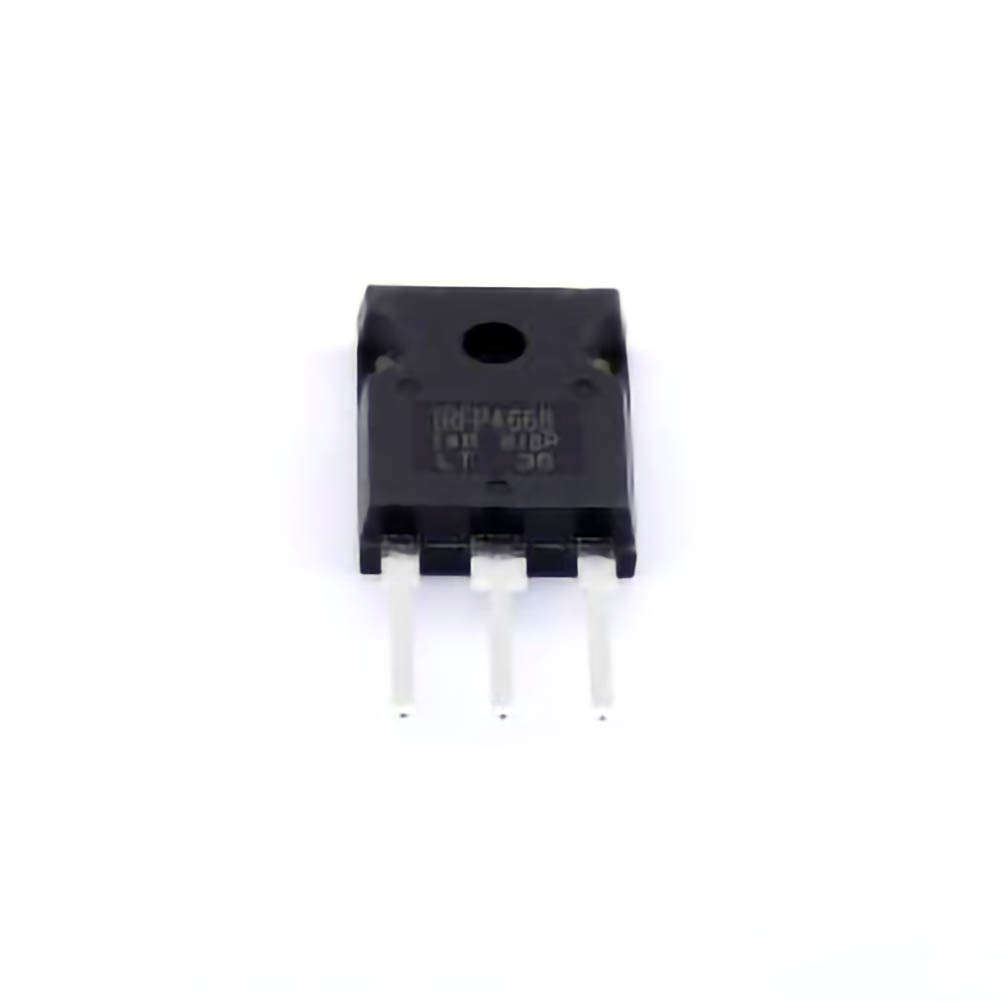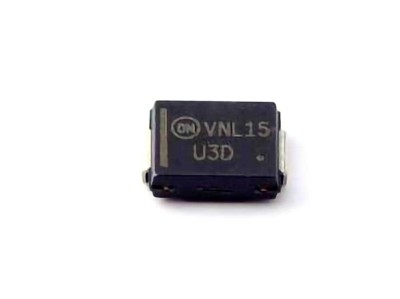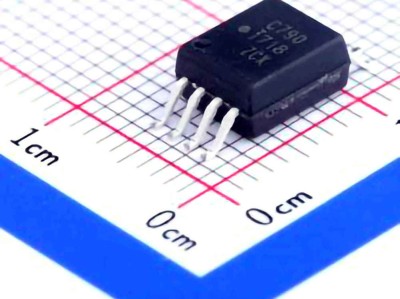
Understanding Overcurrent Problems in IRFP4668PBF MOSFETs
The I RF P4668PBF MOSFET is a high-performance component widely utilized in Power supplies, motor drivers, and other high-power applications. Its impressive specifications, including high current handling capabilities, low Rds(on) (drain-source on resistance), and fast switching speeds, make it an attractive choice for engineers and designers. However, like any high-performance semiconductor device, it is susceptible to a range of operational challenges, particularly overcurrent situations.
What Causes Overcurrent in the IRFP4668PBF?
Overcurrent issues in the IRFP4668PBF typically arise when the current flowing through the MOSFET exceeds its rated limits. There are several primary reasons why this might happen:
Inadequate Heat Dissipation:
The IRFP4668PBF is capable of handling high currents, but like any power semiconductor, it generates heat when it operates. If the thermal Management system is insufficient or the MOSFET is forced to operate at maximum power for prolonged periods, the device may enter thermal runaway, where increasing temperature leads to a further increase in current, eventually resulting in catastrophic failure.
Power Supply Fluctuations:
An unstable or poorly regulated power supply can lead to voltage spikes that may cause the MOSFET to draw more current than intended. Overvoltage conditions, in particular, can stress the MOSFET and cause it to fail.
Load-Induced Overcurrent:
If the load connected to the MOSFET exceeds its design limits, the current demand can surpass what the MOSFET can handle. Whether in a motor drive or power supply system, an unexpected load condition such as a short circuit or excessive demand will create an overcurrent scenario.
Switching Transients:
During switching events, especially at high frequencies, transient spikes in current can occur. These spikes may exceed the MOSFET’s current handling capacity momentarily, leading to stress and potential damage. High dV/dt (voltage change over time) and di/dt (current change over time) can cause these transients, and inadequate gate drive circuits can exacerbate the issue.
How Can Overcurrent Damage the IRFP4668PBF?
When the IRFP4668PBF experiences overcurrent, several issues may arise:
Thermal Damage: The most immediate concern with overcurrent is overheating. If the current exceeds the safe threshold, the MOSFET will dissipate more power as heat. This can lead to the destruction of the internal junctions, damaging the device permanently.
Gate Oxide Breakdown: Overcurrent can lead to excessive voltage across the MOSFET's gate-source junction. This can break down the gate oxide layer, leading to permanent damage and a loss of functionality.
Wear and Tear: Even if catastrophic failure does not occur, repeated overcurrent conditions can accelerate aging, reducing the overall lifespan of the MOSFET. The result is an unreliable device that fails under less severe conditions.
Given these risks, it is essential to implement solutions that help mitigate overcurrent events and protect the MOSFET.
Comprehensive Solutions for Preventing and Handling Overcurrent Issues
Addressing overcurrent issues in the IRFP4668PBF requires a multi-faceted approach, combining design improvements, circuit protection, and Thermal Management strategies to ensure long-term reliability. Below are several effective solutions to prevent or handle overcurrent situations.
1. Efficient Thermal Management:
Thermal management is critical to preventing overcurrent damage. The IRFP4668PBF can handle significant power, but without adequate heat dissipation, the device will overheat, leading to thermal runaway and failure.
Use of Heatsinks and Cooling Fans: For applications where high currents are expected, adding heatsinks or integrating active cooling systems such as fans can significantly reduce the temperature rise in the MOSFET. Properly sizing the heatsink based on the power dissipation of the MOSFET will help maintain optimal operating temperatures.
PCB Design Optimization: A well-designed PCB layout can enhance thermal performance. Use wide copper traces to minimize resistance and heat generation, and ensure that the MOSFET is placed in an area with adequate airflow. If possible, use multiple layers of copper to spread the heat more effectively.
Thermal Pads and Insulating Materials: Employing high-performance thermal pads between the MOSFET and heatsink can improve heat transfer, reducing the overall temperature of the MOSFET. These materials help transfer heat more efficiently from the MOSFET junction to the heatsink, keeping the device within safe operating temperatures.
2. Current Limiting and Protection Circuits:
To prevent overcurrent situations, it is crucial to implement robust protection circuits that detect and mitigate excessive current.
Current Sense Resistors : A low-value sense resistor placed in series with the MOSFET’s drain or source can provide real-time feedback about the current flowing through the device. This voltage can be monitored by a microcontroller or a comparator circuit. If the current exceeds a predefined threshold, the system can take corrective actions, such as turning off the MOSFET or activating a circuit breaker.
Overcurrent Protection (OCP) Circuit: A dedicated OCP circuit can help protect the MOSFET by monitoring current levels and shutting down the system when dangerous levels are detected. These circuits can be configured to either cut off the power to the MOSFET or reduce its drive signal to prevent further damage.
Fuses and Circuit Breakers : In some cases, adding fuses or circuit breakers to the circuit can provide an additional layer of protection. These components will physically disconnect the MOSFET from the power supply in the event of an overcurrent, preventing damage.
3. Robust Gate Drive and Switching Control:
To minimize overcurrent risk during switching events, a well-designed gate drive circuit is essential. Poor gate drive design can cause slow switching transitions, leading to high di/dt and dV/dt, which in turn generate transient currents that may damage the MOSFET.
Gate Resistor Optimization: Adding a gate resistor can help control the MOSFET’s switching speed, reducing the peak current during switching events. By slowing down the rise and fall times of the gate signal, the transient current spikes can be minimized.
Zener Diodes and Clamping: Adding Zener diodes or clamping diodes between the gate and source terminals can protect the MOSFET from voltage spikes that exceed the safe gate-source voltage. This is particularly important for high-speed switching applications where transients can cause significant damage.
4. Monitoring and Feedback Mechanisms:
Continuous monitoring of system parameters is essential for identifying potential overcurrent events before they escalate into catastrophic failures.
Temperature Sensing: Placing a temperature sensor on or near the MOSFET can help track the junction temperature in real-time. If the temperature exceeds safe limits, the system can initiate protective measures such as throttling down the power output or turning off the MOSFET entirely.
Current Monitoring ICs : Several integrated circuits (ICs) are available that provide continuous current monitoring with built-in fault detection. These ICs offer precision measurements and can quickly identify overcurrent conditions, triggering a response such as shutting off the MOSFET or activating other protection mechanisms.
5. Proper Device Selection and Rating:
Ensuring that the IRFP4668PBF MOSFET is appropriately rated for the application is another key factor in preventing overcurrent issues. The IRFP4668PBF has a maximum drain-to-source voltage (Vds) rating of 55V and a maximum continuous drain current (Id) of 120A, but these ratings assume proper thermal management and other operating conditions.
Derating the MOSFET: In real-world applications, it’s often beneficial to derate the MOSFET to improve reliability. Operating the device at a lower current than its maximum rating can extend its life and reduce the likelihood of overcurrent failure.
Redundancy and Parallel MOSFETs: In high-power applications, using multiple MOSFETs in parallel can help distribute the current more evenly, reducing the strain on any single device. This redundancy helps ensure that no single MOSFET is pushed beyond its current handling capabilities.
Conclusion:
Overcurrent problems in the IRFP4668PBF MOSFET are a serious concern in high-power applications, but they can be mitigated with careful design and effective protection mechanisms. By addressing thermal management, implementing current limiting and protection circuits, optimizing gate drive and switching control, and continuously monitoring system parameters, engineers can significantly reduce the risk of overcurrent damage. Additionally, proper device selection and derating can enhance the longevity and reliability of the IRFP4668PBF in demanding applications. With these comprehensive solutions, users can fully harness the power and efficiency of the IRFP4668PBF MOSFET without sacrificing performance or reliability.
If you are looking for more information on commonly used Electronic Components Models or about Electronic Components Product Catalog datasheets, compile all purchasing and CAD information into one place.


